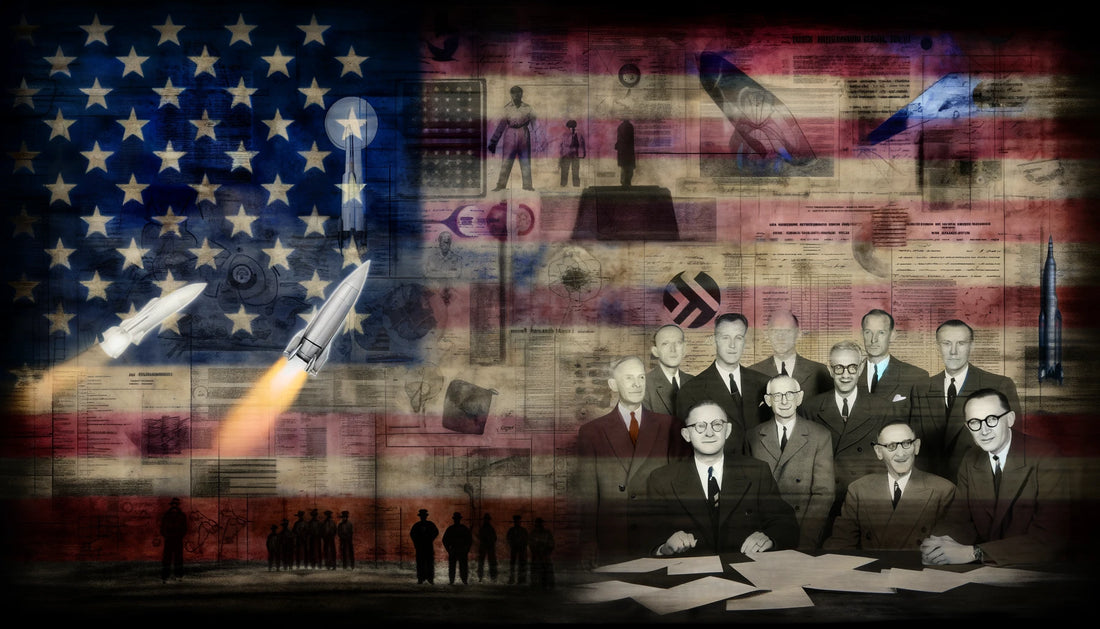 Operation Paperclip: The Secret Program and the Role of Allen Dulles
Operation Paperclip: The Secret Program and the Role of Allen Dulles
In the aftermath of World War II, amidst the ruins and the efforts to build a new world order, a lesser-known yet profoundly impactful operation was set into motion. Known as Operation Paperclip, this covert program orchestrated by the United States government had a single, ambitious goal: to recruit and bring to the United States German scientists, engineers, and technicians, including former Nazis, to secure American technological and scientific advantage during the Cold War. Important note: this same operation would be used to stand up not only DARPA and NASA, but the CIA as well.
Origins of Operation Paperclip
The roots of Operation Paperclip trace back to the closing stages of World War II. As Allied forces advanced across Europe, the United States and the Soviet Union became acutely aware of the value possessed by the minds behind the Nazi war machine. Rocketry, chemical weapons, and medical research were among the fields where Nazi scientists had made significant advancements. Recognizing the potential these scientists held not just in contributing to military superiority but also in propelling American science and technology forward, the U.S. initiated Operation Paperclip.
The Recruitment of German Scientists
Initially, the operation faced moral and legal hurdles, primarily due to the Nazi affiliations of many of the targeted individuals. Many had been members of the SS and had been involved in war crimes, including human experimentation. To circumvent these issues, the Joint Intelligence Objectives Agency (JIOA), which oversaw the operation, removed incriminating information from the scientists' past, allowing them to be employed by the U.S. government.
Over 1,600 German scientists, engineers, and technicians were brought to the United States under Operation Paperclip, although the FBI had at one time noted some 70,000 Germans in the operations total history. Among them was Wernher von Braun, a leading figure in rocket technology and the man who would later become a key player in the development of the U.S. space program, including the Saturn V rocket that took humans to the Moon.
Allen Dulles and Operation Paperclip
While Allen Dulles is primarily known for his role in the Central Intelligence Agency (CIA), his involvement in early post-war intelligence efforts indirectly connected him to Operation Paperclip. Before becoming the first civilian director of the CIA, Dulles served as the head of the Office of Strategic Services (OSS) station in Bern, Switzerland, during the war. In this capacity, he was involved in espionage and intelligence gathering that included interactions with German scientists and engineers as well as some of the very top Nazi SS officers. In fact, he helped many of them circumnavigate their capture by the US military and live out very nice lives for themselves around the world.
Though Dulles's direct involvement in Operation Paperclip is not well-documented officially, his broader contributions to American intelligence efforts during and after the war positioned him as a significant figure in the backdrop against which Operation Paperclip unfolded. His leadership in the CIA during the Cold War and his emphasis on intelligence gathering likely benefited from the technological advancements brought by the scientists recruited through Operation Paperclip (think MK Ultra and DARPA).
Legacy of Operation Paperclip
The legacy of Operation Paperclip is a complex tapestry of scientific achievement and ethical controversy. On one hand, it significantly accelerated American progress in rocketry, aviation, pharmaceuticals, and other fields. On the other, it raises enduring questions about the moral implications of employing former Nazis, some of whom were implicated in war crimes. Keep in mind that the United States population did not know this program even existed until 1990 when it was declassified and released to the public.
One last little note about this particular operation and the CIA, is that one of the first major assignments conducted by the CIA was in 1948 in which many of the newly recruited Nazi's working for the agency were shipped off to Ukraine, where Deep State operations continue to this day. So if you were wondering why we seem to have such a keen interest in Ukraine, now you know.
monkey out.

